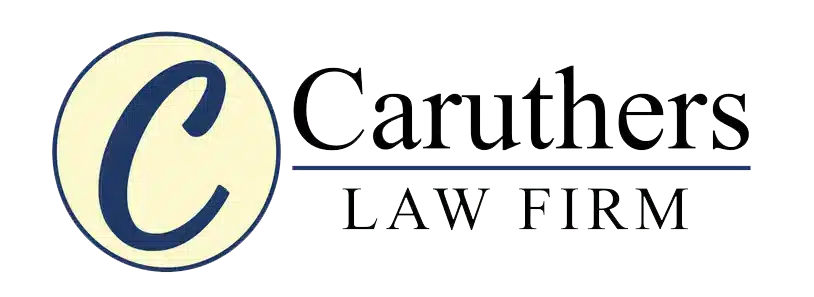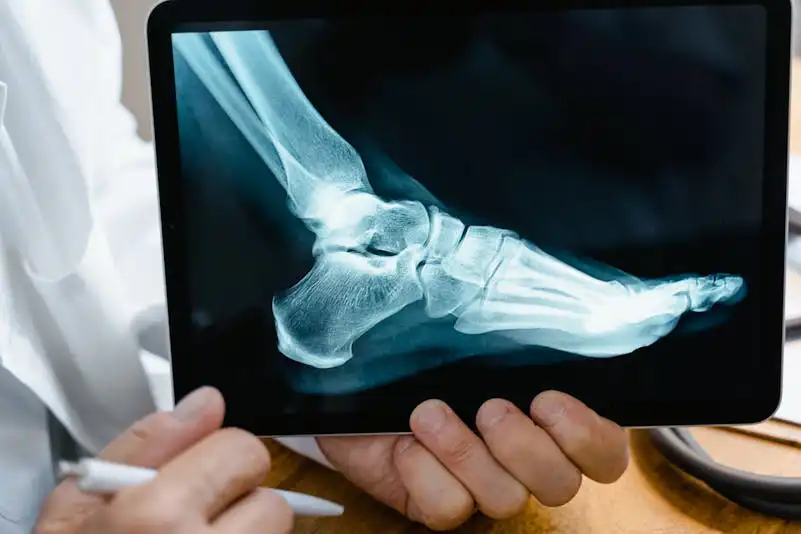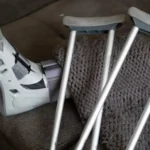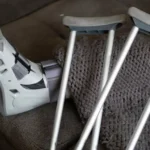A personal injury settlement can offer a path to recovery and resolution, sparing you the rigors of a court trial. The process involves negotiation and legal strategies that aim to compensate the injured party for their losses. This guide is designed to equip you with the knowledge needed to approach personal injury settlements with confidence, highlighting why these settlements are often pursued and the pivotal role of legal representation.
What is a Personal Injury Settlement?
A personal injury settlement is an agreement reached between the injured party (plaintiff) and the person or entity responsible for the injury (defendant). The settlement typically involves the defendant or their insurance company agreeing to pay a sum of money to the plaintiff in exchange for the plaintiff’s agreement not to pursue further legal action. This agreement is legally binding and aims to provide a fair resolution without proceeding to a trial.
Settlements are beneficial as they provide a resolution that is often quicker and less stressful than a court case. A settlement also allows both parties to avoid the uncertainty and public exposure of a trial. It is a strategic option that can offer closure and financial compensation to the injured party while protecting the defendant from potential higher costs and judgments associated with a court decision.
Why Pursue a Settlement?
Settlements are often pursued to avoid the lengthy, expensive, and uncertain process of a court trial. They provide a quicker resolution and can be less stressful for everyone involved. The legal process, especially in personal injury cases, can be protracted, with trials taking months or even years to conclude. Settlements, on the other hand, can often be reached within weeks or months, offering the injured party faster access to necessary funds.
Moreover, a settlement can be a financially prudent decision. Legal fees and court costs can accumulate quickly during a trial, often diminishing the net compensation received by the plaintiff. By settling out of court, both parties can save on these expenses, making it an attractive option. Additionally, settlements offer a level of privacy that court trials do not, as the details and outcomes of a trial become part of the public record.
Key Steps in the Personal Injury Settlement Process
Understanding the steps involved in a personal injury settlement can help you navigate the process more effectively. Here’s a breakdown of the key stages that form the backbone of a settlement process, guiding both parties from the initial incident through to a resolution.
1. Seeking Medical Attention
The first step following an injury is to seek medical attention. Documenting your injuries and receiving proper treatment is crucial for both your health and the legal process. Immediate medical care not only ensures your well-being but also establishes an important record of your injuries, which is vital evidence in a personal injury claim.
Medical documentation serves as a cornerstone in building your case. Comprehensive records from healthcare providers can substantiate your claims of injury and suffering, influencing the settlement amount. It’s crucial to follow all medical advice and attend all follow-up appointments, as gaps in treatment can be used by the defense to downplay the severity of your injuries.
2. Hiring a Personal Injury Lawyer
Choosing the right personal injury lawyer is essential. Firms like Caruthers Law Firm specialize in these types of cases and can guide you through the settlement process. An experienced attorney will evaluate your case, gather evidence, and negotiate on your behalf, ensuring that your rights are protected and that you receive the compensation you deserve.
An adept lawyer brings strategic insight and negotiation skills to the table. They can assess the strengths and weaknesses of your case, advise on the best course of action, and handle communications with insurance companies. Their expertise is invaluable in navigating the complexities of the legal system, allowing you to focus on recovery while they manage the legal intricacies.
3. Investigation and Evidence Gathering
Your lawyer will gather evidence to support your claim. This includes medical records, witness statements, accident reports, and any other relevant documents. This evidence is crucial for determining the validity of your claim and the potential settlement amount. A thorough investigation lays the groundwork for a strong case, helping to substantiate your claims and justify the compensation sought.
Effective evidence gathering involves meticulous attention to detail. Your attorney will work to uncover all relevant information, including any potential liability on the defendant’s part. This process may also involve consulting experts, such as medical professionals or accident reconstruction specialists, to bolster your case with authoritative testimony and analyses.
4. Demand Letter
Once the evidence is gathered, your lawyer will draft a demand letter to the defendant’s insurance company. This letter outlines the facts of the case, details your injuries and damages, and specifies the compensation amount you are seeking. The demand letter serves as a formal starting point for negotiations, clearly stating your position and intentions.
The demand letter is a strategic document, crafted to make a compelling case for your compensation demands. It must be comprehensive and persuasive, addressing potential defenses and highlighting the strength of your evidence. A well-crafted demand letter can set the tone for negotiations, often influencing the insurer’s initial response and willingness to settle.
5. Negotiation
After sending the demand letter, the negotiation phase begins. The insurance company may accept, reject, or counter your offer. This back-and-forth process can take time, and having a skilled negotiator on your side can make a significant difference. Your attorney will work to secure the best possible outcome, using their knowledge and experience to advocate for your interests.
Negotiations can be complex, involving multiple rounds of offers and counteroffers. Patience and persistence are crucial during this stage, as is the ability to assess the fairness of each offer. An experienced attorney can navigate these negotiations effectively, leveraging legal knowledge and negotiation tactics to push for a settlement that adequately compensates you for your losses.
Factors Influencing Settlement Amounts
Several factors influence the amount you may receive in a personal injury settlement. Understanding these variables can provide insight into what you might expect from your claim and how to approach the negotiation process strategically.
Severity of Injuries
The extent of your injuries significantly impacts the settlement amount. More severe injuries typically result in higher compensation due to increased medical expenses and potential loss of income. The long-term effects of injuries, such as permanent disability or chronic pain, are also considered when calculating settlement amounts, as they can affect your quality of life and ability to work.
In addition to medical costs, severe injuries may necessitate ongoing rehabilitation, home modifications, or assistive devices, all of which can increase the financial burden on the injured party. These costs, along with non-economic damages like pain and suffering, are factored into the settlement, underscoring the importance of comprehensive documentation and representation.
Liability
Establishing who is at fault plays a critical role in the settlement process. If the defendant’s liability is clear, it may lead to a more favorable settlement for the plaintiff. Conversely, if there are questions about liability, it may complicate the negotiation process and affect the settlement amount.
In cases where liability is disputed, evidence becomes even more crucial. Witness testimony, accident reconstruction, and expert analysis can help clarify the situation, strengthening your case. The clearer the evidence of the defendant’s fault, the stronger your bargaining position, potentially leading to a quicker and more favorable settlement.
Insurance Policy Limits
Insurance policy limits can cap the amount you can receive in a settlement. If the defendant’s insurance policy has a low limit, it might affect the final settlement amount. Understanding the policy limits can help set realistic expectations and inform negotiation strategies, as the insurance company will not pay beyond these limits unless additional liability is established.
In some cases, if policy limits are insufficient to cover your damages, your attorney may explore other avenues for compensation. This could include pursuing additional claims against other liable parties or exploring underinsured motorist coverage if applicable. Knowing the insurance landscape is essential for maximizing your settlement potential.
Typical Personal Injury Settlements
While every case is unique, understanding typical settlement amounts can provide a baseline for what to expect. These figures are influenced by the specifics of each case, including the factors discussed earlier, and can vary widely depending on the circumstances.
Average Personal Injury Settlement
The average personal injury settlement varies widely depending on the case specifics. However, many settlements range from a few thousand dollars to over a million, depending on the factors mentioned earlier. Knowing these averages can help you gauge the reasonableness of an offer and set expectations for your case.
It’s important to note that while averages provide a general benchmark, your settlement will be determined by the unique details of your case. Factors such as the jurisdiction, the defendant’s financial situation, and the strength of your evidence all play a role in shaping the final settlement figure.
Bodily Injury Settlement Amounts
In cases of significant bodily injury, settlements often cover medical expenses, rehabilitation costs, lost wages, and pain and suffering. This can lead to higher settlement amounts, particularly if the injuries are long-lasting or permanent. The goal is to compensate the injured party for both economic and non-economic damages, providing financial relief and recognition of their suffering.
Bodily injury claims require meticulous documentation to support the compensation sought. Detailed medical records, expert testimony, and thorough evidence of financial losses are crucial components of a successful claim. These elements help build a compelling case, increasing the likelihood of securing a favorable settlement.
Personal Injury Settlement Examples
- Minor Car Accident: Settlements for minor accidents may range from $3,000 to $15,000. These cases typically involve minor injuries and relatively straightforward liability, leading to quicker resolutions and modest compensation.
- Severe Car Accident: In cases involving severe injuries, settlements may exceed $100,000. These cases often involve complex medical issues and significant financial losses, necessitating higher compensation to cover extensive damages.
- Slip and Fall Cases: Depending on the severity, these settlements can range from $10,000 to $50,000 or more. Liability and the nature of the injuries play crucial roles in determining the settlement amount in these cases, with factors like negligence and property conditions influencing the outcome.
The Role of Caruthers Law Firm
Choosing the right law firm can significantly impact the outcome of your settlement. Caruthers Law Firm has a proven track record in handling personal injury cases. Their expertise and dedication to client success make them a valuable ally in navigating the settlement process, providing the support and guidance needed to achieve a favorable outcome.
Why Choose Caruthers Law Firm?
- Experience: With years of experience in personal injury law, Caruthers Law Firm understands the nuances of these cases. Their deep knowledge of legal precedents and strategies allows them to craft effective approaches tailored to each client’s unique situation.
- Client-Focused: They prioritize their clients’ needs and work tirelessly to achieve the best possible outcome. The firm’s commitment to open communication and personalized service ensures that clients are informed and empowered throughout the process.
- Proven Results: The firm has successfully secured favorable settlements for many clients, providing peace of mind during challenging times. Their track record of success speaks to their ability to advocate effectively and deliver results, making them a trusted choice for personal injury representation.
Understanding the personal injury settlement process is essential for anyone involved in an accident or interested in learning about legal proceedings. By familiarizing yourself with the steps, factors, and typical outcomes, you can navigate this complex process more confidently. Remember, seeking professional legal assistance from experienced firms like Caruthers Law Firm can make a significant difference in securing a fair settlement.
If you or a loved one has been injured and are considering a personal injury claim, don’t hesitate to contact a reputable personal injury lawyer to discuss your options and protect your rights. The right legal support can guide you through the intricacies of the legal system, ensuring that you receive the compensation you deserve and the justice you seek.
Caruthers Law Firm
Address: 4141 Southwest Fwy,
Suite 400
Houston, TX 77027
(713) 526-9557
View our Google Listing






